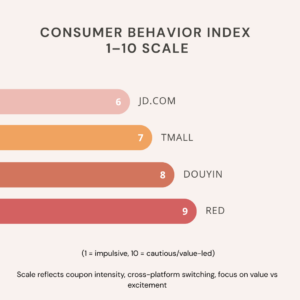Foreign investors tend to approach China like a nervous swimmer eyeing the deep end – interested, but cautious.

In 2025, though, there’s a different current pulling. That cautious interest? It’s being replaced by a calculated push. Why? Because for once, the policy winds are at your back.
2025 is not just another calendar milestone. It marks the final lap of China’s 14th Five-Year Plan – and the country is in a full sprint to hit its goals. Domestic demand, growth stability, and risk management are the mantras. But here’s where things get interesting: China’s government isn’t just juggling internal priorities. It’s actively rolling out the welcome mat for foreign businesses in ways that matter – through real regulatory reform.
Let’s decode how.
The Negative List Shrinks – and That’s Good News for You
Fewer Restrictions, More Sectors to Enter
China’s infamous “Negative List” used to be the ultimate buzzkill for foreign investors. It laid out all the sectors you couldn’t touch. But the 2024 version, effective from November 1, changed the game.
Only 29 restricted or prohibited fields remain. Restrictions in manufacturing? Gone. Completely. This means foreign companies now stand on equal footing with Chinese firms in most areas. That’s not a soft shift – it’s a seismic one.
And there’s more. A State Council meeting in August 2024 laid out China’s next move: open up the telecom, education, and healthcare sectors. By September, foreign companies could run wholly foreign-owned hospitals in selected cities and engage in cell and gene therapy within free trade zones.
Data centers – yes, even those – got the green light in October with the removal of the 50 percent foreign ownership cap in selected cities.
Where China Wants You to Invest
15% Growth in Opportunities
The 2024 draft of the Catalogue of Encouraged Industries for Foreign Investment is not just a list – it’s a cheat sheet for where the government wants you to go. It features 1,700 items – up 15 percent from 2022 – spanning sectors from high-performance equipment and generative AI to pet care, healthcare, education, and green energy.
Split into national and regional categories, it spells out who gets the incentives and where. Foreign investors tapping into western China or Hainan can enjoy a reduced corporate tax rate of 15 percent. Plus, they get tariff exemptions and discounted land prices, sometimes as low as 70 percent of the national minimum.
The New Quality Productive Forces (NQPF): China’s Innovation Engine
It’s Buzzwordy, But It’s Real
If you haven’t heard of “New Quality Productive Forces,” you will. This is China’s big bet on innovation to leapfrog global competition. Think disruptive tech, digitized factories, autonomous computing, and green chips.
And while the central government hasn’t rolled out blanket incentives (yet), local ones are doing the heavy lifting. Shanghai’s Lingang zone, for example, is dangling subsidies up to RMB 10 million for intelligent computing and green tech infrastructure. Even better: foreign investment isn’t just tolerated here – it’s wanted.
Yes, Rural Revitalization Is Also an Investment Opportunity
Smart Farming, Telehealth, and Clean Energy Infrastructure
China’s rural revitalization strategy isn’t a sentimental pitch – it’s a policy priority for a country where nearly 480 million people still live outside cities. The 2024–2027 plan focuses on food security, agricultural productivity, and smart infrastructure.
Foreign businesses bringing tech to irrigation, energy grids, or healthcare? You’re on the radar. With increased focus on telemedicine, pharmaceutical distribution, and sanitation systems, there’s room for real innovation in places most brands never think to look.
If You’re Ready to Move, China’s Ready Too
Foreign companies that once saw China as a regulatory maze might want to reassess. The 2025 policy landscape is cleaner, clearer, and, dare we say, competitive. The real shift isn’t in just what’s written on paper—it’s in how incentives, access, and sector priorities are aligning.
And if you’re still figuring out how to localize your strategy, navigate the pilot zones, or interpret the catalogues? That’s where Digital Crew can help – because understanding the policy is one thing, moving with it is another.























